How to grow Astilbe
Astilbe like a degree of shade, particularly at midday, and moist damp soil that is rich in organic matter to thrive. Foliage is deciduous and emerges in March, lasting through to October and beyond. Flowers are fluffy spires in pinks, reds and whites that tower over the foliage on strong, wiry stems. Some varieties have more open blooms than others so check your chosen type if this is of particular importance. They also vary in height from 60cm to 1.2m and in spread from 40cm – 1m. A fully hardy perennial, Astilbe are best planted from January through to September each year, thus allowing them a growing season to establish and for you to appreciate their nectar rich flowers which are enticing to bees and other pollinators from late spring to early autumn.
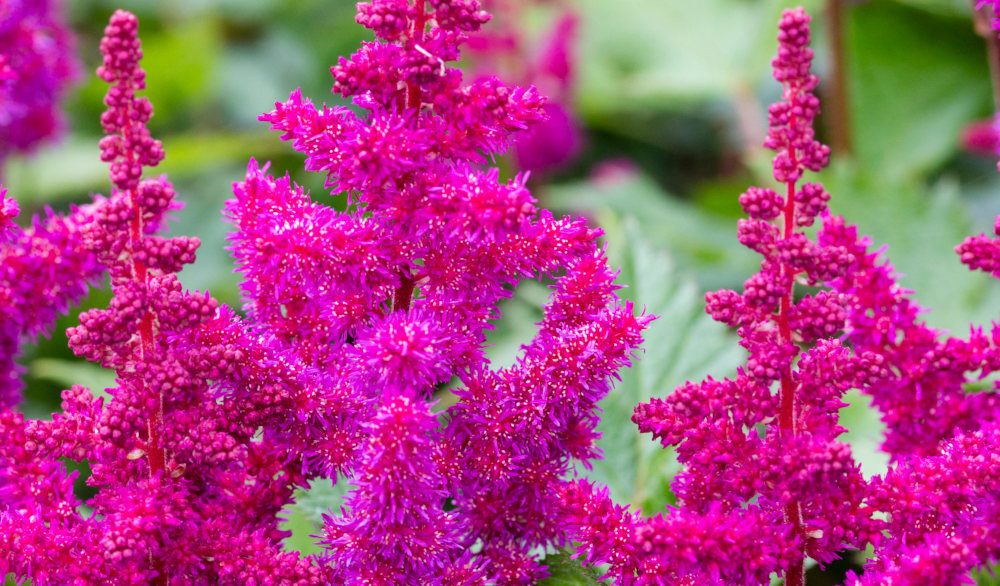
Key Information
Soil pH
Position
Hardiness

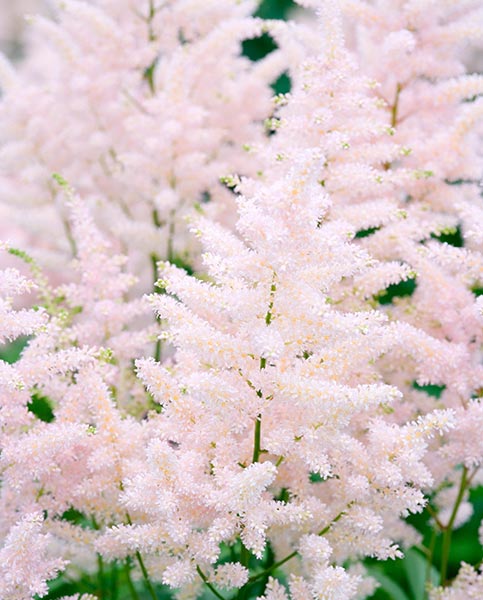
Where & when to plant Astilbe
Astilbe chinensis requires soil which is consistently moist in order to thrive. A spot next to a stream or pond, or in a damp area which is partly shaded is the perfect location for Astilbe.
Spring or autumn are the best seasons for planting Astilbe - which will allow your young plants to put down roots whilst the soil is slightly warm. If you are purchasing Astilbe plants in winter, it would be wise to leave the plants in their containers in a sheltered location until the weather warms up before planting out. For summer planting, extra care will be needed to ensure young plants are well watered and do not dry out.
The feathery plumes of Astilbe flowers look great when planted in groups or swathes, so place several plants together for impactful colour and texture if you have the space.
How to plant Astilbe
Dig a hole which is slightly deeper and wider than your potted plant in order to allow roots to spread. Although Astilbe love damp soil, they require a site which drains well, so add a few handfuls of grit to the planting hole if your soil is prone to waterlogging. Next, you should add a generous amount of well-rotted manure or homemade compost to enrich your soil and feed your plants.
Gently tease your Astilbe chinensis out from its pot and loosen the roots a little before placing in the hole with the crown of the plant just below the surface of your soil. Fill in around the edges and base of your plant with more soil and firm around the base before watering in well.
Water your young plants at least every other day until they have established themselves.
Shorter, or dwarf varieties of Astilbe chinensis can also be successfully grown in pots. Choose a container with drainage holes which is fairly large to allow space for your Astilbe to mature, particularly if you are adding companion plants. Add a few broken crocks, followed by plenty of grit as a base layer to good quality multi-purpose compost enriched with organic matter for potted Astilbe plants. A close eye should be kept on watering all year round to ensure the soil never dries out.
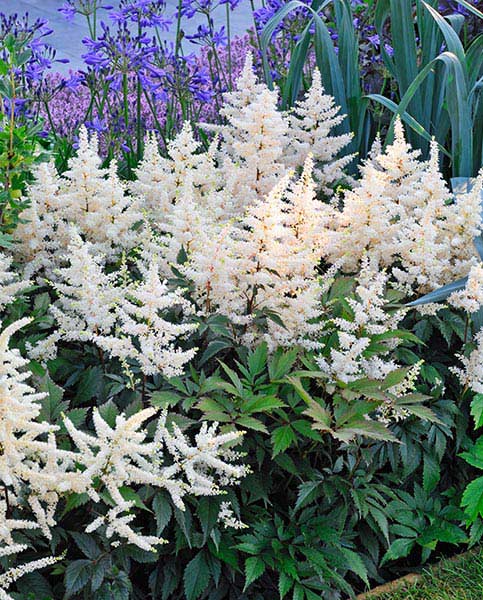
What to plant with Astilbe
Astilbe chinensis work perfectly in a shady border, bog garden, or next to water.
The flower colour can range from whites and creams to pastel or deep pinks, and the foliage may be green or reddish-purple in tone.
Plant Astilbe with other plants which share the same growing conditions. Lush green Hosta and soft and textural Ferns provide wonderful complimentary foliage companions.
Delicate flowering shade lovers such as Dicentra, Solomon’s seal, Lily of the valley, Astrantia, Pulmonaria, Heuchera, Tiarella, and Candelabra primulas all compliment Astilbe chinensis and will happily grow side by side.
Please contact our wonderful Customer Care Team at Hayloft if you would like any further growing guidance or planting suggestions for your Astilbe chinensis - we will be more than happy to help.

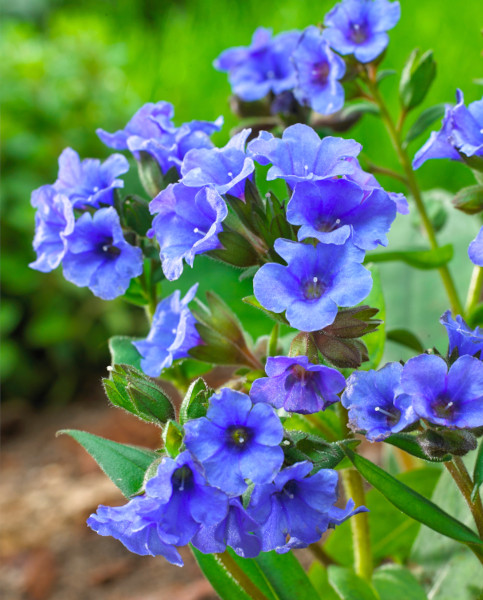
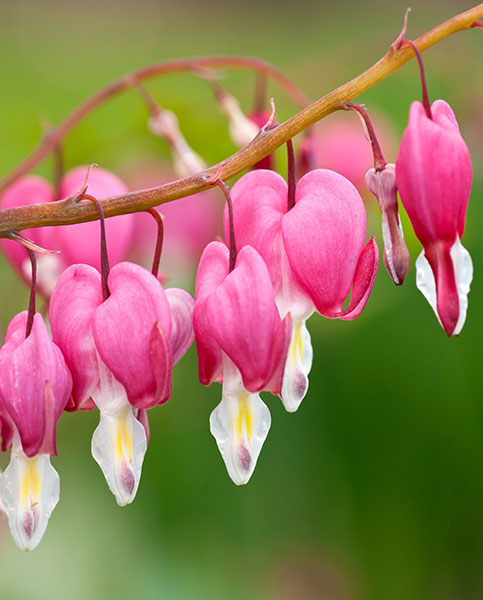
How to care for Astilbe
These easy and rewarding perennials will settle and thrive quickly in the right spot and then be happy with very little care.
Water only during dry conditions, especially if your plants are not grown close to water. If they are close to water, they should be able to access their own supply once roots have established.
Astilbe chinensis make fantastic long-lasting cut flowers and look wonderful in the vase adding height and a feather-like texture to your arrangements. The blooms will last up to 2 weeks in the home if you regularly refresh the water.
Apply a mulch of leaf mould or homemade compost to the base of plants in autumn to feed your soil and add nutrients which will help with the formation of next year’s flowers.
The flower plumes can be left on your plants once faded as they add attractive texture throughout autumn and early winter. In late winter, you should prune back and compost all of last year’s foliage and flowers to make way for the fresh spring growth.
How to propagate Astilbe
Astilbe chinensis can be easily propagated by division. Established plants should be divided every 3-4 years which will both re-invigorate your mature plants and provide you with new plants for your garden, or to share.
Ideally, you should do this in early spring. Firstly, water your Astilbe chinensis generously which will help to loosen the roots, then using a garden fork, dig around each plant and lift out the whole clump. Separate the root ball into several smaller sections by slicing it apart with a sharp spade.
You can either pot up or re-plant your new divisions into a suitable location in your garden. Water your new divisions well until established, treating them in the same way as a new plant.




